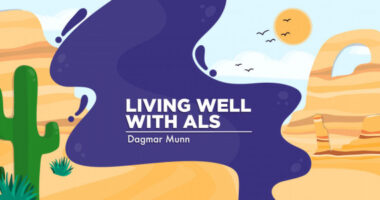Bifocal Vision Correction and the Art of Dance

“I can see clearly now the rain is gone.
I can see all obstacles in my way.
Gone are the dark clouds that had me blind.”
Last week, the Jimmy Cliff version of that Johnny Nash composition played over and over in my brain. The impetus was the conclusion of a binge-viewing marathon.
Admittedly, I am a history nerd. So much so that I fervently took in all 24 episodes of the lecture series “The Black Death: The World’s Most Devastating Plague” in just two days. Among my many takeaways was the societal loss of vision acuity that resulted.
The fact that the plague’s sudden arrival in the mid-14th century caused such widespread panic was hardly a surprise. But the nearsighted way the hysteria manifested itself was. It spawned the Flagellant movement, whose members publicly tortured themselves to appease the presumed wrath of God. Other extreme behavior included incessant hedonistic indulgence and crazed dancing.
Having no apparent causality to point to, grasping at straws ruled the day. Popular among the theorized origins were a rare astrologic confluence, bad air, and earthquakes. The tragic scapegoating of Jewish communities was also in play.
Prior to viewing the series, I was not aware of the plague’s wavelike torment across several centuries. Seemingly, it would run its devastating course only to reemerge a decade or so later. During these subsequent outbreaks, people were often caught in a farsighted stupor. Many folks couldn’t focus on the lessons learned from recently concluded devastations.
After multiple iterations of torture then abatement, society adjusted. A balance was struck affording clear vision, both near and further out. The medieval world, most notably Europe, moved forward.
The series lecturer, Purdue University English professor Dorsey Armstrong, makes the case that the plague left a world that was utterly transformed. She offers that by virtue of the changes it brought, the Black Death produced the forces that resulted in the Renaissance and the Protestant Reformation. The long-term consequences also enabled a continent that less than two centuries later would have the technology and the wherewithal to explore a new world. It accelerated the arrival of modernity itself.
As I got deeper into the lectures, the parallels between the communal impact of the Black Death and my own experience post-ALS began to be apparent. I have had my own bouts with fuzzy vision, both afar and close up.
Immediately following communication of the diagnosis, a paralyzing panic overtook me. Days later, when a semblance of function returned, I found myself in a myopic haze, bitterly torn. On one hand, I was fearful that my fate was the result of years of accumulated sinning. On the other hand, with a portending future of dwindling opportunity, the thought of enjoying spontaneous, unbridled mischief while still able beckoned.
I desperately sought a culprit. At various times I was willing to foist blame on mercury absorption, Lyme disease, or head trauma.
Like the plague behaved in the Middle Ages, ALS has not promulgated steady state decline with me. Rather, it attacks, then leaves me on a plateau for a bit. Think of an elevator with no lift and random stops of varying duration on its inevitable descent. It has been following these relative calm interludes — when ALS had lulled me into a hyperopic, false sense of security — that the most damage has been inflicted.
Eventually, as had the survivors of the plague, I evolved a bifocal perspective. I live ever cognizant that ALS fully intends to tighten its grip on me. Harsh restrictions, rigorous precautions, and somber emergency responses govern my activity. However, I approach life as though ALS is irrelevant. From my current baseline, I can only move forward, striving to better myself. In that regard, ALS has changed everything, while changing nothing.
An artistic genre sprang forth, coincidental with the plague. Captured both in poetry and paintings, the danse macabre, or dance of death, depicted skeletons escorting living humans to their graves in a lively waltz. The clergy, kings, knights, and commoners alike join in, conveying that regardless of status, wealth, or accomplishments in life, death comes for everyone. It served as a sober reminder of impending mortality, while prompting in some the desire to make the best of what’s left. Sort of like the effect that ALS has had on me.
To put it another way, I’ll borrow from singer-songwriter Jesse Winchester, and reference some of my favorite lyrics of all time:
“If the wheel is fixed,
I would still take a chance,
If we’re treading on thin ice,
Then we might as well dance.”
***
Note: ALS News Today is strictly a news and information website about the disease. It does not provide medical advice, diagnosis, or treatment. This content is not intended to be a substitute for professional medical advice, diagnosis, or treatment. Always seek the advice of your physician or other qualified health provider with any questions you may have regarding a medical condition. Never disregard professional medical advice or delay in seeking it because of something you have read on this website. The opinions expressed in this column are not those of ALS News Today or its parent company, Bionews, and are intended to spark discussion about issues pertaining to ALS.







Linda Nolan
Thanks for your insightful article. Thinking of you.?